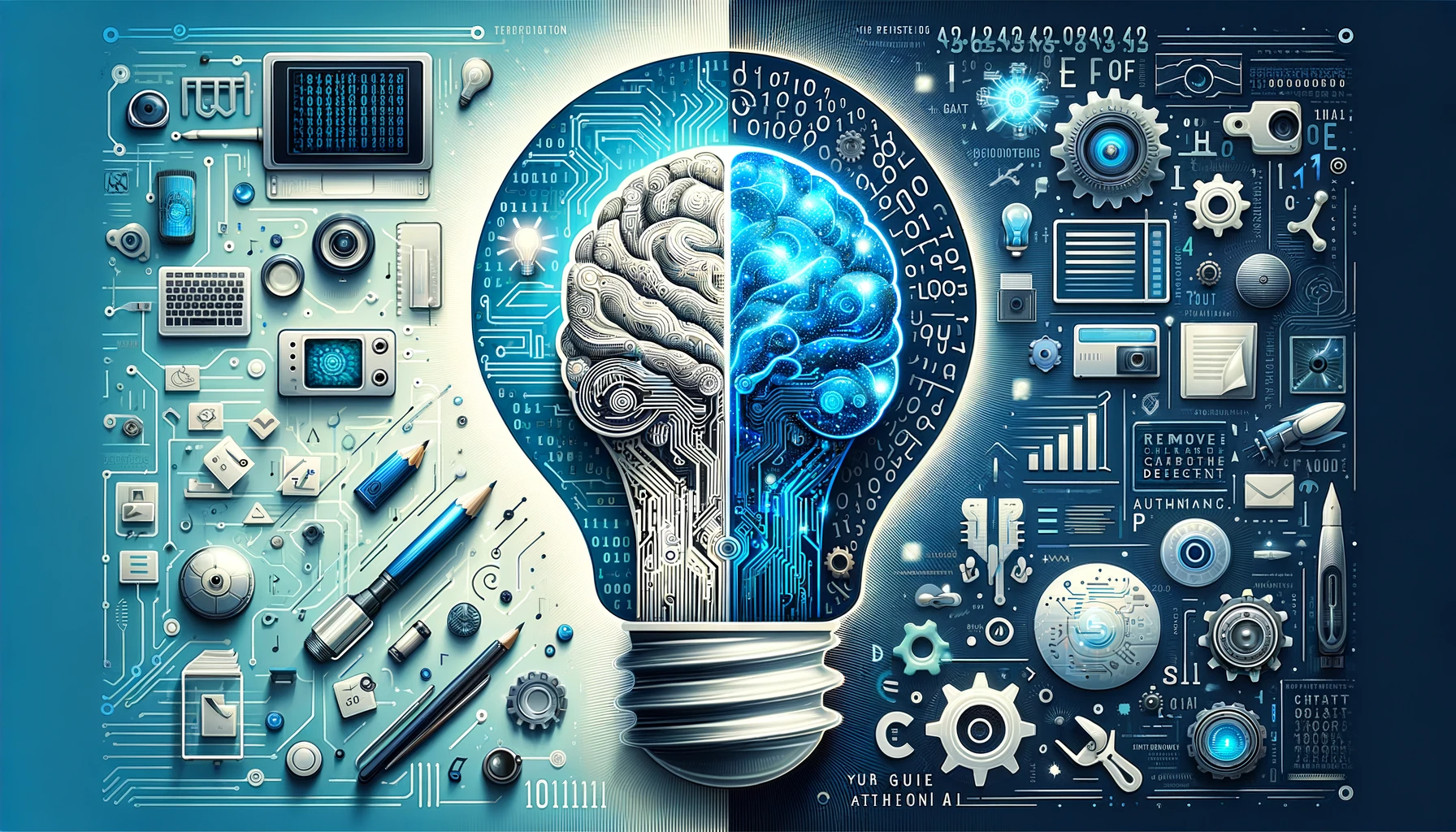Have you ever wondered how the rise of artificial intelligence is changing the way we write and communicate? In recent years, ChatGPT, an advanced AI language model, has gained immense popularity for its ability to generate human-like text. This technology has revolutionized content creation, offering new possibilities in writing and communication. However, with this innovation comes a challenge: the need to remove ChatGPT detection in various contexts, such as academic writing, professional content creation, and SEO strategies.
This article delves into the fascinating world of ChatGPT and AI detection, exploring why and how to effectively remove ChatGPT detection. We’ll discuss strategies to bypass AI detection, tools and techniques for evasion, and the balance between SEO and AI content. Additionally, we’ll touch on the ethical implications of using AI in content creation and share real-world examples and best practices. Our goal is to provide a comprehensive guide that’s easy to understand, ensuring that even complex concepts are clear to everyone. So, whether you’re a student, a content creator, or just curious about AI, join us as we navigate the intriguing landscape of ChatGPT and AI detection.
Understanding ChatGPT and AI Detection
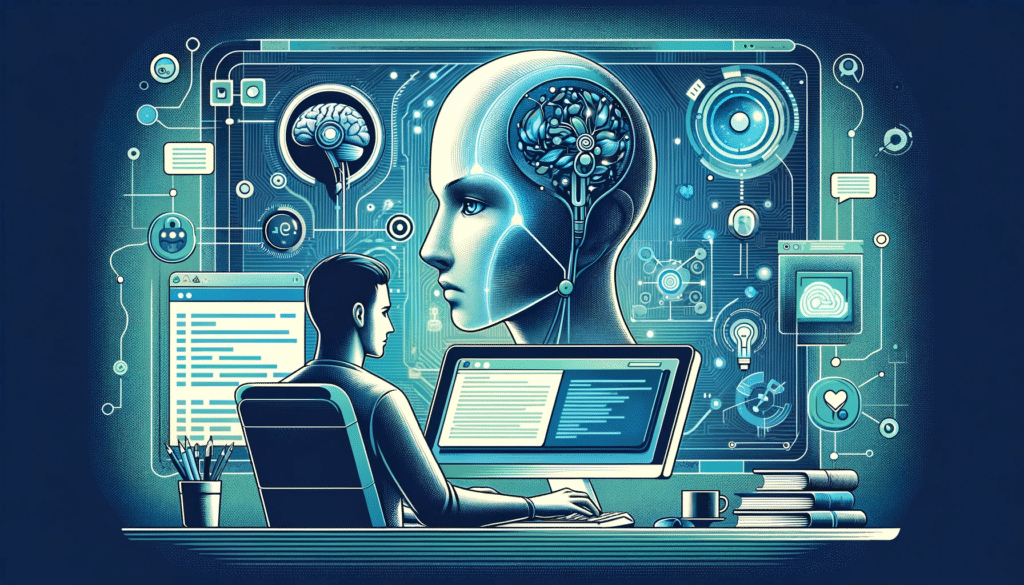
Imagine having a conversation with a machine that responds just like a human. That’s what ChatGPT does. It’s a cutting-edge AI language model developed by OpenAI, designed to understand and generate human-like text. ChatGPT can write essays, answer questions, and even create poetry, making it seem almost indistinguishable from a human writer. This ability has made it a popular tool for various applications, from helping students with homework to assisting writers in content creation.
But how do we know if a piece of writing is created by ChatGPT or a human? This is where AI detection comes into play. AI detection tools analyze text to identify patterns and characteristics typical of AI-generated content. These tools look for clues like repetitive phrasing, unusual sentence structures, or a lack of nuanced human emotion that might suggest the text was created by an AI. The development of these tools has become crucial, especially in academic and professional settings. In schools and universities, educators use AI detection to ensure students submit original work. In the professional world, especially in journalism and content creation, these tools help maintain authenticity and credibility.
The importance of AI detection can’t be overstated. In academic settings, it upholds the integrity of the educational process, ensuring students learn and develop their writing skills. For professionals, it’s about preserving the human touch in content, which is vital for connecting with readers and maintaining trust. As AI technology like ChatGPT becomes more advanced, the role of AI detection will only grow, ensuring a balance between embracing technological advancements and maintaining human authenticity in writing.
Why Remove ChatGPT Detection?

Is it ever justifiable to hide the fact that a piece of writing was generated by AI like ChatGPT? This question sits at the heart of a growing debate. On one side, there are concerns about authenticity and integrity, especially in fields where original human thought is valued. On the other, there are scenarios where the ability to remove ChatGPT detection can be beneficial, even necessary.
Ethical considerations are paramount in this discussion. The use of AI in creating content raises questions about honesty and transparency. For instance, in academic settings, presenting AI-generated work as human-created can be considered deceitful. Similarly, in journalism and professional writing, the undisclosed use of AI might mislead readers, affecting the credibility of the content and the writer. However, there are also arguments supporting the use of AI in content creation, especially when it enhances creativity or efficiency, provided its use is disclosed.
There are specific scenarios where removing ChatGPT detection can be advantageous. For example, in creative writing, AI can be used as a tool for generating ideas or overcoming writer’s block. In business, AI-generated reports can be tweaked to seem more human-like, making them more relatable for readers. Here’s a list of scenarios where this might apply:
- Creative writing and brainstorming
- Business reporting and document creation
- Language learning and practice
- Generating coding or technical content
However, it’s crucial to understand the legal and ethical boundaries. The key is transparency. Users should disclose the use of AI where necessary, especially in professional or academic contexts. The goal is not to deceive but to use technology as a tool for enhancement, not replacement. As AI continues to evolve, so will the discussions around its use, pushing us to constantly reassess the balance between technological advancement and ethical responsibility.
Strategies to Bypass AI Detection
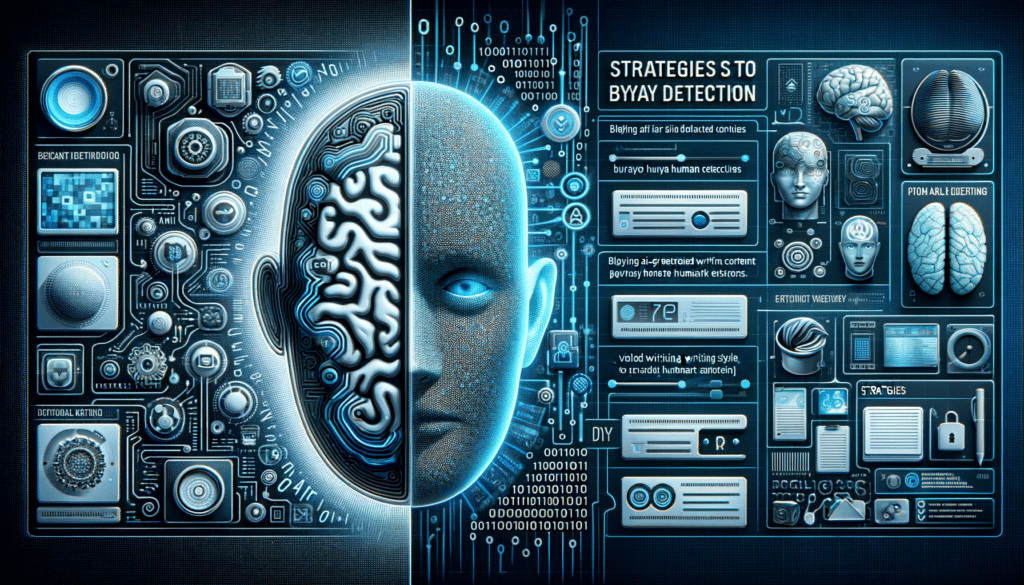
Have you ever thought about how to make AI-generated content look more human? As AI detection tools become more sophisticated, it’s becoming increasingly important to know how to bypass these detectors, especially when using AI tools like ChatGPT for legitimate purposes. Here are some effective strategies to make AI-generated content appear more human-like and pass under the radar of AI detection tools.
One key approach is writing in a conversational style. AI-generated content often lacks the natural flow of human conversation. By tweaking the content to sound more like a casual chat, it can seem more human. This involves using colloquial language, contractions, and even throwing in some common speech errors or slang. Another strategy is to mix up writing styles and structures. AI tends to follow certain patterns in writing. By varying sentence lengths, using different paragraph structures, and mixing various writing styles, the content can evade detection more easily. This variety mimics the natural inconsistency found in human writing.
Avoiding repetitive and formulaic language is also crucial. AI-generated text often falls into the trap of using the same phrases or sentence structures repeatedly. Breaking this pattern by using synonyms, rearranging sentence structures, and introducing variability in language can help. Incorporating personal anecdotes or experiences adds a human touch that AI cannot replicate. Sharing stories, personal reflections, or unique insights can significantly humanize the content. Lastly, writing in languages other than English can be an effective strategy. Many AI detectors are primarily trained on English text, so content in other languages might not be as easily detected.
In summary, the strategies to bypass AI detection include:
- Writing in a conversational style
- Mixing up writing styles and structures
- Avoiding repetitive and formulaic language
- Incorporating personal anecdotes or experiences
- Writing in languages other than English
Tools and Techniques to Evade AI Detection
Free Tools
1. SEO.ai Detector
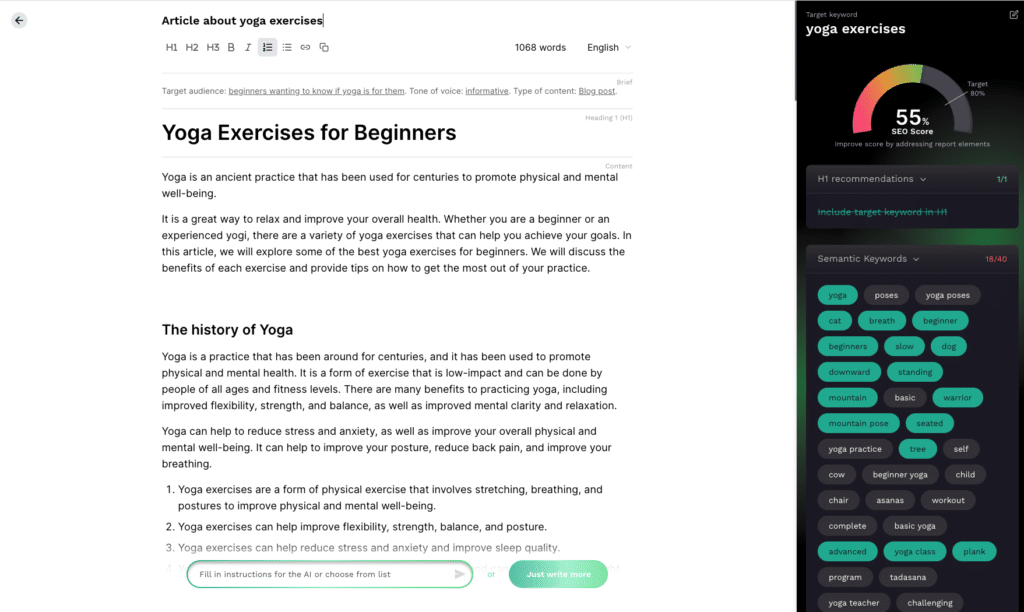
The SEO.ai Detector is a sophisticated tool that integrates four different AI detection models. This multi-model approach enhances its ability to discern GPT-generated content from human writing.
- In-Depth Effectiveness: It shows a high degree of accuracy across various GPT models, making it a reliable choice for identifying AI-generated content in a range of contexts.
- Expanded Limitations: While highly effective in general detection, it might not always capture the subtleties and nuanced expressions that characterize human writing, especially in more creative or less structured texts.
- Additional Considerations: Ideal for users needing a straightforward solution for detecting AI-generated content, particularly in more formal or structured writing.
- Extended Pros and Cons:
- Pros: High accuracy rate, benefits from the integration of multiple detection models, versatile across different GPT models.
- Cons: Potential challenges in discerning highly nuanced or creatively written human text.
2. GPT-2 Output Detector
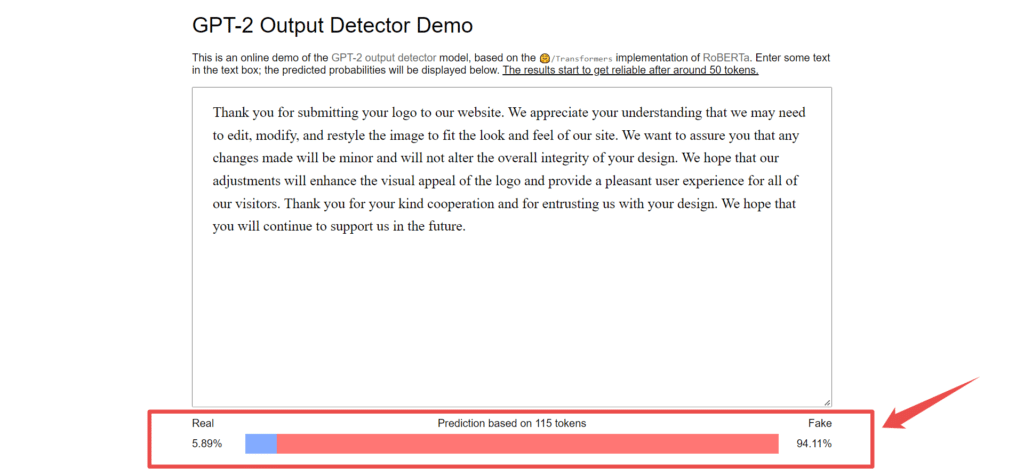
This tool provides a numerical score (0-100) indicating the likelihood of the text being AI-generated, specifically designed for GPT-2 model outputs.
- In-Depth Effectiveness: It has demonstrated reliable performance in tests, successfully identifying AI-generated content, making it a practical tool for quick assessments.
- Expanded Limitations: Its primary design for GPT-2 means it might not be as effective in detecting content from newer or more advanced AI models like GPT-3 or ChatGPT.
- Additional Considerations: Best suited for users who need a quick and straightforward method to gauge AI content, especially when dealing with GPT-2 generated texts.
- Extended Pros and Cons:
- Pros: User-friendly scoring system, effective for GPT-2 content.
- Cons: Reduced effectiveness with newer AI models, limited scope of detection.
3. Corrector
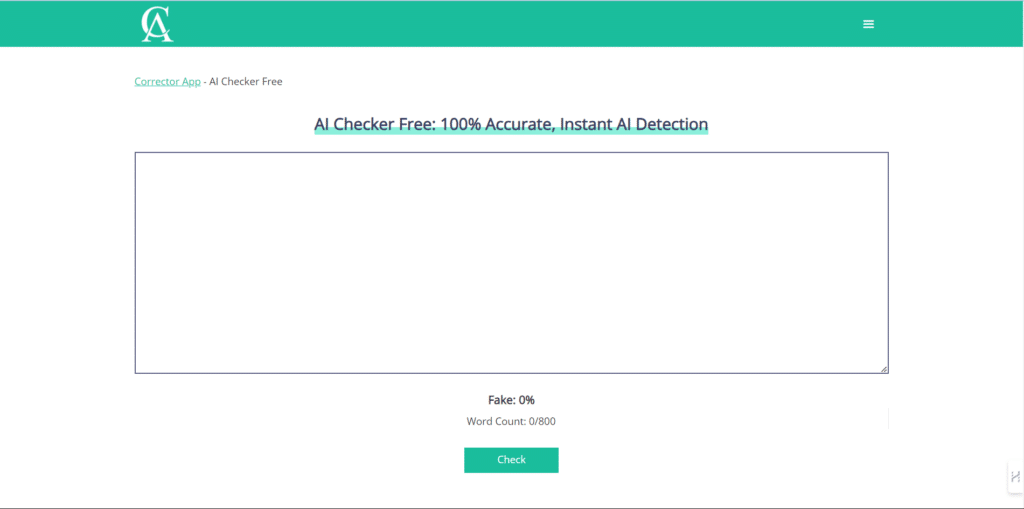
This tool provides a numerical score (0-100) indicating the likelihood of the text being AI-generated, specifically designed for GPT-2 model outputs.
- In-Depth Effectiveness: It has demonstrated reliable performance in tests, successfully identifying AI-generated content, making it a practical tool for quick assessments.
- Expanded Limitations: Its primary design for GPT-2 means it might not be as effective in detecting content from newer or more advanced AI models like GPT-3 or ChatGPT.
- Additional Considerations: Best suited for users who need a quick and straightforward method to gauge AI content, especially when dealing with GPT-2 generated texts.
- Extended Pros and Cons:
- Pros: User-friendly scoring system, effective for GPT-2 content.
- Cons: Reduced effectiveness with newer AI models, limited scope of detection.
4. GLTR
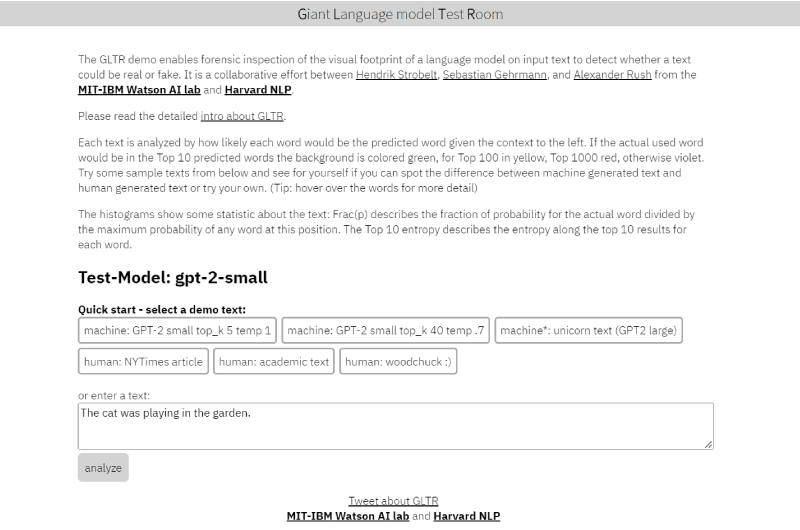
GLTR stands for “Giant Language Model Test Room.” It uses a novel approach by predicting the next word in a sequence to determine if the text is AI-generated.
- In-Depth Effectiveness: Effective in identifying AI content, particularly in texts where predictability is high.
- Expanded Limitations: It may not be as effective in detecting highly sophisticated or creatively written AI text, where predictability is lower.
- Additional Considerations: An excellent tool for users interested in understanding the predictability patterns in AI-generated content.
- Extended Pros and Cons:
- Pros: Innovative approach using next-word prediction, useful for educational purposes.
- Cons: May struggle with texts where AI has been used to generate more creative or less predictable content.
Paid Tools
1. Copyleaks

Copyleaks is primarily known for its plagiarism detection capabilities but also offers features to detect AI-generated content. It uses advanced algorithms to analyze text for originality and AI-generated characteristics.
- In-Depth Effectiveness: Despite its advanced features, Copyleaks has shown limitations in accurately identifying AI-generated content, often misclassifying it as human-written in tests.
- Expanded Limitations: Its main drawback is the inaccuracy in AI content detection, which questions its reliability for this specific purpose.
- Additional Considerations: While it may not be the most reliable for AI detection, it’s still a robust tool for plagiarism checking, making it suitable for academic and professional writing contexts.
- Extended Pros and Cons:
- Pros: Comprehensive analysis features, strong performance in plagiarism detection.
- Cons: Inconsistent in detecting AI-generated content, leading to potential misclassifications.
2. Content at Scale

Content at Scale offers a unique feature of providing authenticity scores for written content, aiming to distinguish between human and AI-generated text.
- In-Depth Effectiveness: It has proven effective in identifying AI-written content, offering a straightforward scoring system that indicates the likelihood of AI involvement.
- Expanded Limitations: The tool’s primary limitation is its focus on scoring rather than providing a detailed analysis of the text’s characteristics.
- Additional Considerations: This tool is ideal for users who need a quick and easy way to check the authenticity of content without requiring in-depth analysis.
- Extended Pros and Cons:
- Pros: Easy-to-understand scoring system, effective in basic AI content identification.
- Cons: Lacks depth in analysis, providing limited insights into the nuances of the text.
General Considerations for Paid Tools
- Accuracy: The effectiveness of these tools in detecting AI content varies significantly, with some tools performing better than others.
- Use Case: The choice of tool should align with the specific requirements, whether it’s for comprehensive plagiarism checking or quick AI content identification.
- Model Updates: As AI technology evolves, the effectiveness of these tools may change, necessitating regular updates and adaptations to new AI models and writing styles.
While paid tools like Copyleaks and Content at Scale offer specialized features for content analysis, their effectiveness in AI detection can vary. Users should consider their specific needs and the limitations of each tool when choosing the right solution for AI content detection.
SEO and AI Content: Balancing Authenticity and Detection
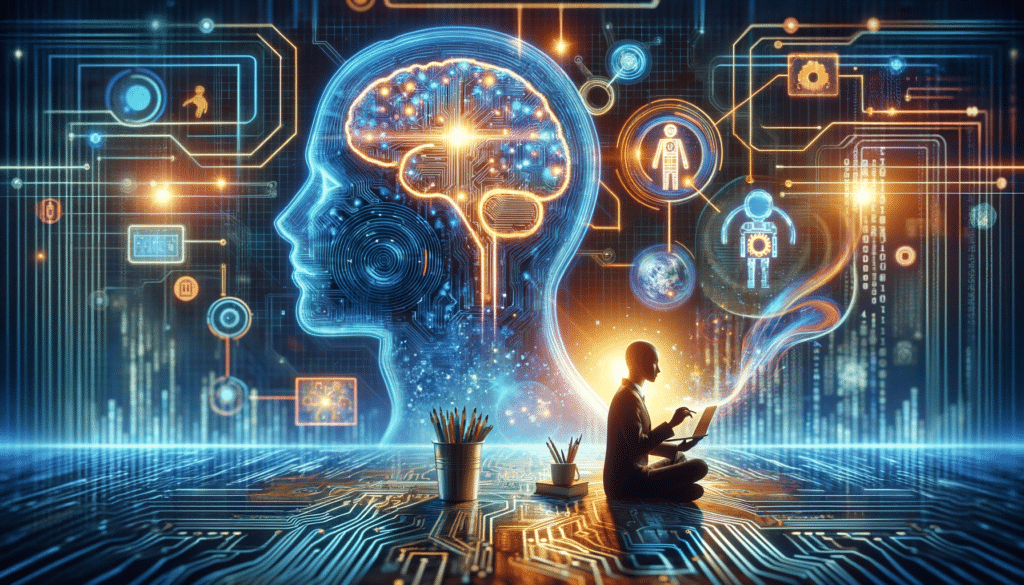
How can SEO experts leverage AI like ChatGPT for content creation while ensuring authenticity? In the realm of SEO, the rise of AI tools has been a game-changer, offering unprecedented efficiency in generating content. However, this efficiency comes with the challenge of maintaining authenticity and evading AI detection tools, especially in a landscape where original, human-centric content is highly valued.
For SEO professionals using ChatGPT, the key lies in using AI as an assistant rather than a replacement. AI can be utilized for initial drafts, idea generation, or to overcome writer’s block. However, the final content should be infused with a human touch – this includes personal insights, unique perspectives, and a natural, conversational tone. Strategies like incorporating real-life examples, user-generated content, and current, relatable anecdotes can enhance the human appeal of the content.
Balancing AI use and maintaining content authenticity requires a mindful approach. SEO experts should focus on:
- Enhancing AI-generated content with personal insights and industry-specific knowledge.
- Using AI for technical aspects of SEO, like keyword research and optimization, while keeping the narrative human-driven.
- Regularly updating content to reflect current trends and information, adding a layer of freshness that AI alone cannot achieve.
In essence, the goal is to blend the efficiency of AI with the authenticity and relatability of human writing, creating content that resonates with both search engines and real readers.
Ethical Implications and Best Practices
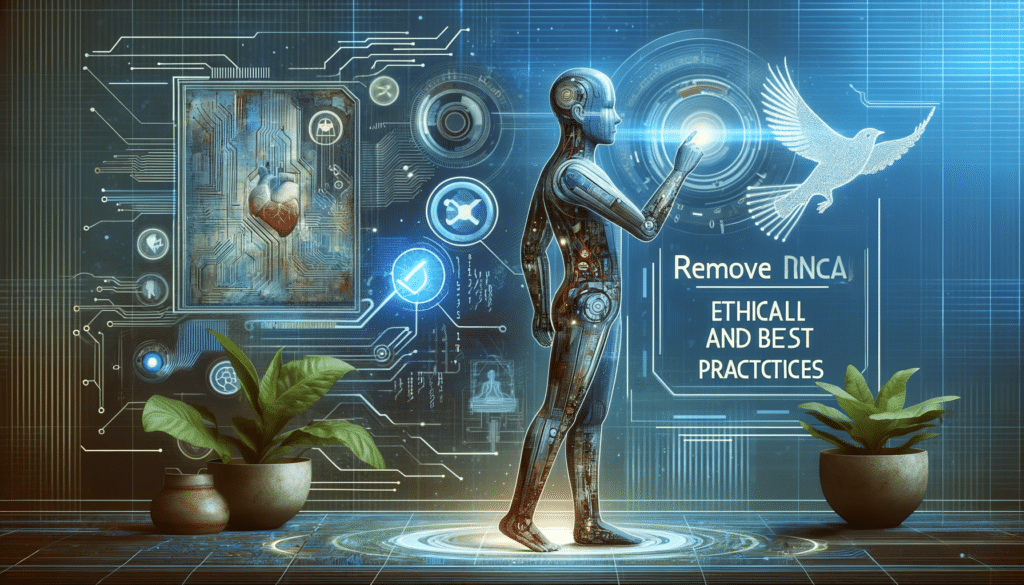
Is it ethical to use AI for content creation? This question sparks a significant debate in the digital world. On one hand, AI tools like ChatGPT offer efficiency and scalability in content production. On the other, they raise concerns about authenticity, originality, and the potential for misuse. The ethical use of AI in content creation hinges on transparency and intention. It’s crucial to disclose the use of AI, especially in professional or academic contexts where originality is paramount.
Best practices for the responsible use of AI tools involve a blend of transparency, human oversight, and ethical guidelines. Users should:
- Clearly disclose AI involvement in content creation, maintaining honesty with their audience.
- Use AI as a tool, not a replacement, ensuring that the final content reflects human insight and creativity.
- Stay updated with AI advancements to understand the capabilities and limitations of these tools.
Looking to the future, the landscape of AI-generated content and its detection is poised to evolve rapidly. As AI tools become more sophisticated, so will the methods for detecting AI-generated content. This progression calls for a dynamic approach to ethical considerations, constantly reassessing the balance between technological innovation and ethical responsibility. The future will likely see more nuanced guidelines and standards for AI content creation, ensuring that while we embrace the benefits of AI, we also uphold the values of authenticity and integrity.
Case Studies and Real-World Examples
Have there been instances where AI-generated content successfully evaded detection? Indeed, there are several examples where AI tools like ChatGPT have been used to create content that passes as human-written. For instance, a marketing agency used AI to produce blog posts for a client. By blending AI-generated drafts with human editing – incorporating unique industry insights and a personalized tone – they successfully bypassed AI detection tools. The content not only appeared human-made but also performed well in SEO rankings, demonstrating the potential of AI in content creation when used judiciously.
On the flip side, AI detection plays a crucial role in maintaining integrity in various fields. In academic settings, for example, AI detection tools have been pivotal in identifying essays or research papers generated by AI, ensuring the upholding of academic honesty. Similarly, in journalism, AI detectors help in verifying the authenticity of articles, maintaining the credibility of news sources.
These cases highlight the dual nature of AI in content creation. While AI can be a powerful tool for generating efficient and effective content, its detection is equally important to preserve authenticity and integrity in professional and academic environments. The key takeaway is the importance of responsible AI use, where its capabilities are harnessed without compromising ethical standards and authenticity.
Conclusion
In the rapidly evolving landscape of digital content creation, what does the future hold for AI and its detection? This article has explored the multifaceted role of AI in content creation, from the efficiency and scalability it offers to the ethical and authenticity challenges it presents. We’ve seen how AI, when used responsibly, can be a powerful ally in content creation, yet its detection remains crucial to maintain integrity and originality in various fields.
Looking ahead, the future of AI in content creation and detection is poised for significant advancements. As AI tools become more sophisticated, they will offer even greater capabilities in content generation. Concurrently, detection methods will also evolve, becoming more adept at distinguishing between AI-generated and human-created content. This progression underscores the importance of a balanced approach, where the benefits of AI are leveraged without compromising on ethical standards and authenticity.
It’s imperative to encourage the responsible and ethical use of AI tools. Users should aim for transparency, disclosing AI involvement where necessary, and ensuring that AI aids rather than replaces human creativity. As we navigate this new era of digital content, the focus should be on harnessing the power of AI responsibly, ensuring that it serves to enhance, rather than undermine, the value of human-centric content creation.
FAQs
In the world of AI and content creation, questions abound regarding ChatGPT and AI detection. Let’s address some of the most common inquiries to demystify these topics.
- What is ChatGPT and how is it used in content creation? ChatGPT is an AI language model developed by OpenAI, capable of generating human-like text. It’s used in content creation for tasks like drafting articles, generating ideas, or even writing code. The key is its ability to understand and respond to prompts in a way that mimics human writing, making it a valuable tool for content creators seeking efficiency and innovation.
- How can AI detection tools identify content created by ChatGPT? AI detection tools analyze text for patterns typical of AI-generated content. These patterns can include certain predictability in word choice, sentence structure, and lack of nuanced human expression. Advanced tools use machine learning algorithms to compare text against large datasets of known AI-generated content, enhancing their accuracy.
- Why is it important to detect AI-generated content? Detecting AI-generated content is crucial for maintaining authenticity and integrity, especially in professional, academic, or journalistic contexts. It ensures that content adheres to ethical standards and is genuinely reflective of human insight and creativity. In academic settings, it helps uphold standards of originality and academic honesty.
